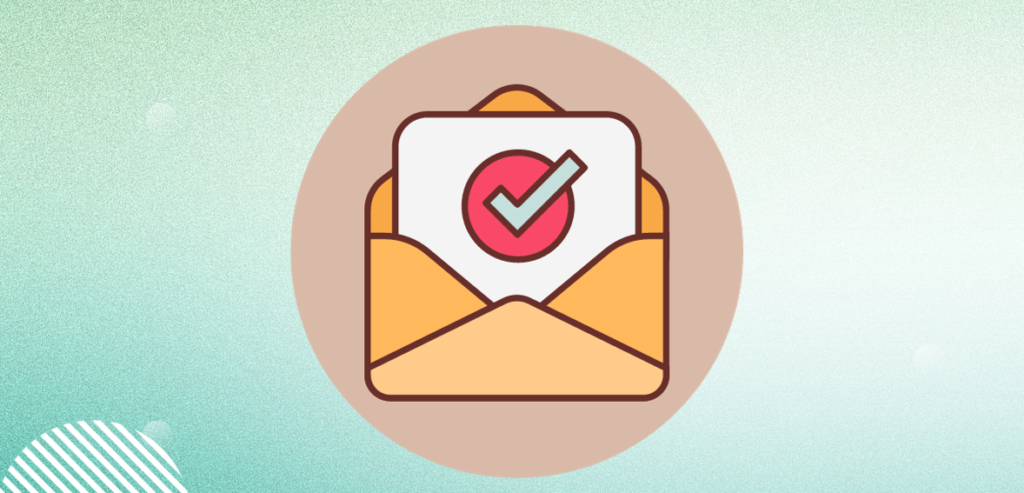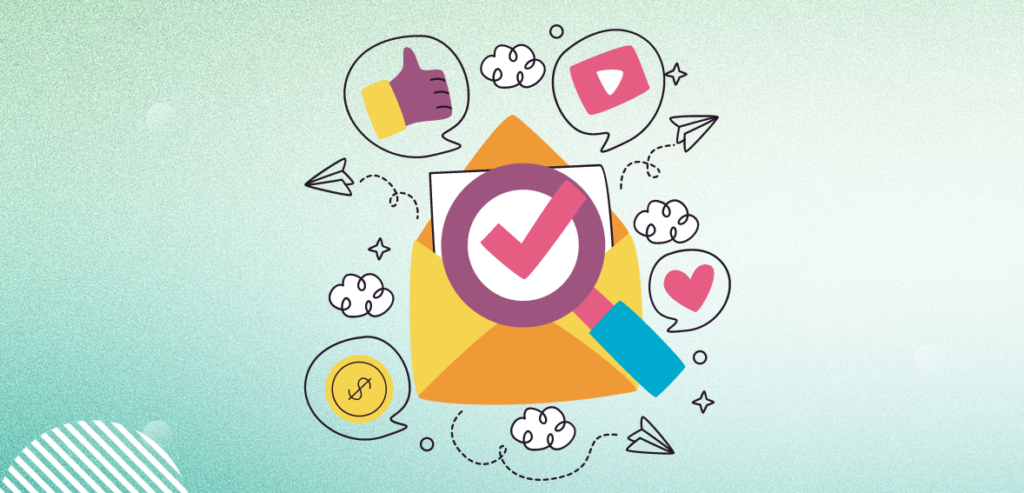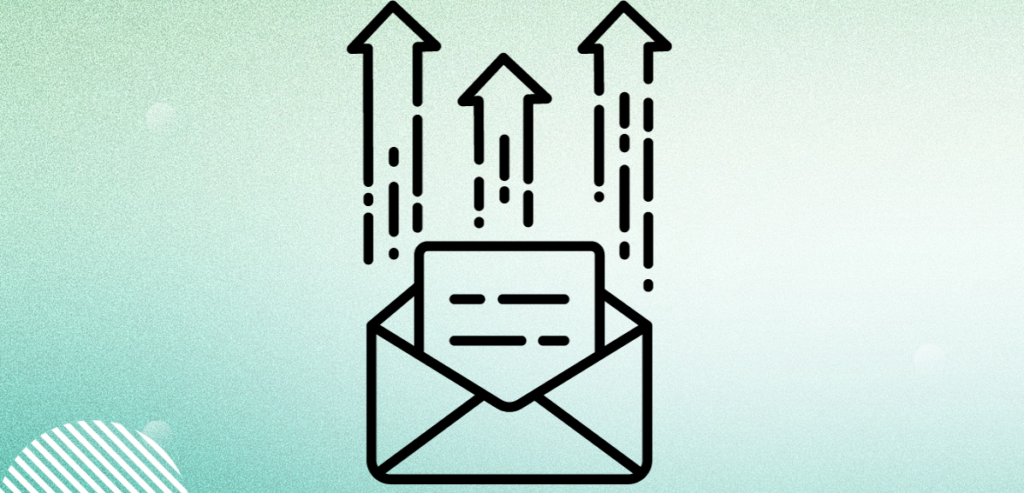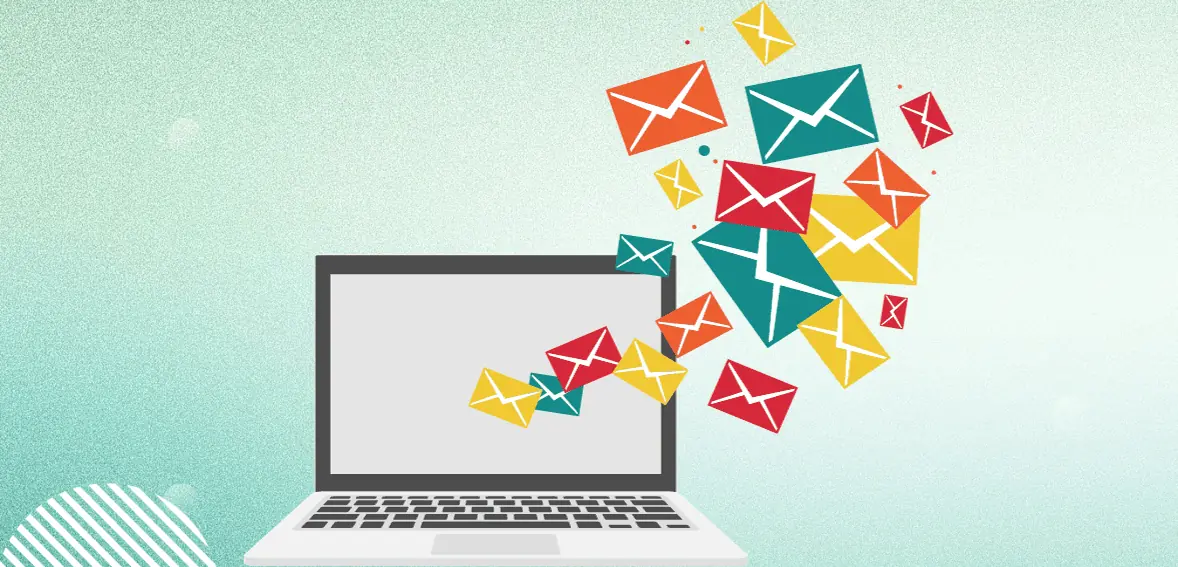While email marketing might seem like an age-old method, it remains a powerful tool for connecting with potential customers and strengthening ties with current ones. The enormity of email conversion is so high that 81% of small businesses solely rely on it as the primary channel for customer acquisition. The success of your email approach largely hinges on understanding your audience and their preferences.
No matter your business or what you offer, the ultimate goal of email campaigns is usually the same: to drive conversions. To achieve this, there are universal strategies that can be applied across various industries. These tactics aim to enhance engagement and boost the effectiveness of your email marketing efforts.
What Is An Email Conversion?
An email conversion occurs when a recipient takes a desired action after receiving an email from your brand. While some may narrowly define it as a purchase or registration for an event, the role of email goes beyond just these final steps. Emails play a vital role in guiding customers through various stages of engagement, leading them closer to making a purchase or other significant actions.

Simply put, an email conversion can happen whenever your email content persuades a recipient to complete a specific task, whether it’s making a purchase or simply opening the email. It’s crucial to grasp this broad definition to prevent misunderstandings.
Examples of successful email conversions include:
- Opening the sent email
- Completing an online registration form
- Take part in a giveaway (if there is an offer)
- Purchasing an item
Understanding Email Conversion Rates
An email conversion occurs when someone takes a particular action after reading an email you’ve sent. To determine this rate, you divide the number of people who took the desired action by the total emails sent. Essentially, the email conversion rate shows the portion of recipients who completed the intended action. This rate offers valuable insights into the effectiveness of your email campaigns. By tracking this metric consistently over time, you can gauge the success of your marketing efforts.

Furthermore, it’s beneficial to know how your email performance compares to that of competitors and other businesses in your field. This knowledge helps you set realistic expectations for open and conversion rates within your industry.
The email conversion rate offers a clear way to gauge the effectiveness of your marketing efforts. It provides a reliable, quantifiable figure that indicates whether your strategies are effective or if adjustments are needed. For example, selling 20 products might seem positive, but if you sent emails to 10,000 recipients, that’s just a 2% conversion rate. This highlights the need to enhance your email approach.
What Is Considered A Good Email Conversion Rate?
Determining a standard email conversion rate is challenging for marketers due to various influencing factors. These factors include your business sector, what actions you define as conversions, the typical price of your offerings, and the email platform you utilize.

In general, B2B companies often report lower conversion rates compared to B2C businesses, largely because B2B transactions tend to involve higher amounts. Similarly, products or services with higher values might have lower click-through rates compared to lower-priced items. Conversion rates can also differ significantly across industries, influenced by factors like user engagement levels indicated by open and click-through rates.
Online sources present a range of average email conversion rates, from 4% to 25% or more. The key is to consider the effort and expenses invested in your email campaign when evaluating its success. Ultimately, conversion rates vary widely based on industry, target audience, and the nature of the campaign. The goal is always to achieve the highest possible conversion rate tailored to your business.
Best Strategies To Help You Boost Email Conversion
Here are the top 10 straightforward tips to increase email conversion on your emails and help you achieve your sales targets:
1. Create a Feeling of Urgency and Limited Availability
Humans are innately wired to be a bit competitive. It’s in our nature to want something that’s in demand or might run out soon. This aspect of human behavior can be a powerful tool in your email marketing efforts. Once you’ve grabbed attention with an interesting subject line and tailored your email content, it’s important to also make the reader feel a sense of urgency. Your message should hint that what you’re offering won’t be around forever.
By emphasizing urgency and limited availability, you’re telling customers that the product or service has a limited supply and others might get it first. This encourages them to act quickly and make a purchase, which can boost your conversion rate effectively.
2. Segmenting Your Email Lists
Crafting the perfect email with a compelling subject and strong CTAs is great, but its impact is lost if it reaches the wrong audience. Effective segmentation is key to ensuring your emails reach the right individuals, maximizing your chances of conversions.
The alignment between your email’s purpose and the list of recipients is crucial. The more finely segmented your list, the better the results.
The criteria for segmentation will depend on your email type and its intended outcome. Consider segmenting based on factors such as:
- Location: Geographic segmentation focuses on promoting things like sales or events in specific areas. Think about a group of coffee stores. They might send emails to people in one city to tell them about special deals happening at their local store.
- Customer Interests: Psychographic segmentation looks at what people like to do and what interests them. Let’s say a company that plans trips finds out some customers love exciting adventures. They can then send those customers emails about trips that offer lots of thrills.
- Grouping by Actions: Behavioral segmentation looks at what customers do. Instead of just their interests or where they live, it focuses on actions like what they buy or how often they interact with ads. This helps companies figure out what customers might want next.
- Demographics: Categorizing emails based on factors such as gender, age, income, and location can greatly enhance the relevance of the content that you are planning to send. For instance, you have a product that is suitable for young GenZs, so sending these targeted emails to a middle-aged individual makes no sense; by organizing emails in this manner, they can ensure that the appropriate information reaches the intended recipients.
- Life Stage: Another effective approach is to segment customers based on their life stage or relationship with the company. This involves distinguishing between active customers, new customers, and those who haven’t purchased in a while. This helps in sending the right emails to each group. New customers might get a welcome message, active ones might get updates, and those who haven’t bought anything recently might get a special offer to get them interested again.
- VIP Customers: This strategy focuses on special customers who often spend a lot of money, known as VIP customers. Imagine a store giving these customers early access to sales or special discounts. The aim is to make these important customers feel valued and encourage them to keep shopping.
3. Using Visuals to Get and Keep Attention
Adding visuals to your emails can make a big difference. People like pictures, and they can help make your emails more interesting and boost how many people take action. Studies even show that having pictures can make folks 80% more likely to read what you’ve written.
When crafting your email and the webpage it leads to, try out different visual elements like stock photos, emojis, GIFs, and drawings. You can find these visuals for absolutely free on the internet or use free tools to make your cool graphics.
4. Add a Personal Touch to Your Emails
To increase the likelihood of more subscribers reading your emails and improve the success of your email marketing efforts, consider adding a personal touch to your messages. While your subscribers understand they are not the only ones receiving these emails, they still appreciate getting singled out. One effective way to achieve this is by personalizing your emails with their names. When a subscriber sees their name in the line, it immediately grabs their attention. Creates a sense that the message was specifically crafted for them.
By adding the subscriber’s name, you enhance the chances of them opening the email. In fact, it’s 50% more likely that your email will be opened if the subject line includes the recipient’s job title, name, or any other kind of personal touch. Opening your emails brings you closer to gaining more conversions for your business. So, if you’re aiming to up your conversion rate, personalizing your emails for your subscribers is the way to go.
5. Use Reminder Emails to Boost Engagement
People receive a flood of emails every day, making it easy for your message to get lost in the shuffle. One effective way to stay on their radar is by sending reminder emails.
For instance, if you’re running a week-long sale starting on Monday, don’t just send one email and call it a day. Some folks might be ready to buy right away, but others might need a nudge. Sending reminder emails throughout the week can help keep your sale top of mind for your audience.
By sending timely reminders, you not only remind people of your sale but also increase the chances of them making a purchase. It’s a simple yet effective strategy to boost sales and keep your business in your customers’ minds.
6. Using Automated Emails
Automated emails have a higher chance of being opened, about 45.7%, compared to 18.8% for emails sent manually. As your business gets bigger, it gets harder to give each customer individual attention. That’s where email automation comes in handy.
With email automation, you can set up customized email sequences that go out based on specific customer actions or traits. Most email tools make it easy to create these sequences. And don’t worry; automation doesn’t mean losing that personal touch. By using automation, personalization, and segmentation together, you can send the right message to the right person at the perfect time, all while making it more personalized.
Here are some of the best tools that have all these capabilities for a segmented and personalized email campaign:
- Mailchimp (800,000 Paid Users)
Mailchimp provides various features like organizing data, ready-to-use templates, and ways to make emails feel personalized. It even offers a Customer Journey Builder to set up automated campaigns that match what your customers are looking for.
- HubSpot (113,925 Paid Users)
HubSpot stands out as a top tool for many marketing tasks. It’s especially good for making email marketing simpler through its automation features. When it comes to sales and marketing, HubSpot can be a real game-changer. Their email tool makes it easy to craft personalized messages, which can lead to more people clicking on your emails.
- ActiveCampaign (180,000 Paid Users)
ActiveCampaign lets you set up drip emails based on how subscribers interact with your emails, what they like, where they’re from, and more. This tool helps you automate the whole process of communicating with your customers or subscribers, making their experience better.
- GetResponse (350,000 Total Users)
Most of us send out email newsletters on a schedule according to the customer’s location, right? So why not sync that with your calendar? GetResponse offers an easy-to-use tool where you can drag & drop to manage when your emails go out, making scheduling a straightforward task.
7. Make Sure To Optimize Emails For Phones
Did you know that 49% of all emails are opened on smartphones or tablets? If your emails aren’t set up to look good on these devices, you could be missing a big chunk of your audience.
Not tailoring your emails for mobile can lead to issues like hard-to-read text or messed-up formatting, which can make your business look less than professional.
Imagine trying to read small text on a phone screen; it’s not ideal. A well-designed mobile email, on the other hand, adjusts perfectly to the screen size, making it easy for readers to see and engage with your content without any hassle.
8. Use Compelling CTAs to Drive Action
There are plenty of ways to highlight a special offer or link in your emails, whether it’s through a simple text link, a button, an image, or even a GIF. Whatever you choose, make sure it’s easy to see and tempting to click on.
Avoid using the same “Click here” button in every email; that can come off as repetitive and uninspired. Personalized CTAs can boost conversions by 202% compared to generic messages, so, scatter different CTAs throughout your email, each with its enticing message to spark your readers’ interest.
When writing your emails, aim for content that’s easy to skim rather than dense and detailed. Keep it concise and direct, nudging your readers towards that all-important next step. A well-crafted CTA guides your readers where you want them to go.
9. Monitor Email Open Rates and Clean Your List
Just having a bunch of email addresses doesn’t mean they’re all useful. If some of those addresses aren’t active, it’s better to remove them from your list. Keeping inactive addresses can mess up your campaign stats. There are tools available that can check if the emails on your list are still active and being used.
Also, keep an eye on your email open rates. A high open rate is good, but if people aren’t taking action after opening, like clicking links or making purchases, you might need to adjust your email content or design.
10. Use A/B Testing to Improve Your Email Strategy
Rather than guessing what might be a more effective approach, let your audience be your guide by comparing versions of your emails. A/B testing, also known as split testing, may take some time to show results, but It’s worth the wait and effort. Successful marketers understand that what works today may not work tomorrow. That’s why it’s crucial to test and adapt your approach based on the insights provided by data.
You can experiment with elements such as changing graphics in your email or adjusting the wording of your CTA to see which yields results. If one version clearly outperforms the other, then you’ll know it’s time to make a change.
Start by making assumptions based on your data and then conduct tests while carefully analyzing the outcomes. This method allows you to discover what truly resonates with your audience, enabling you to focus your marketing efforts.
Conclusion
Enhancing email conversion rates involves a blend of strategic thinking, understanding your audience, and continual refinement. Whether it’s creating a sense of urgency through limited-time offers or personalizing content to resonate with individual subscribers, each strategy plays a vital role in driving engagement and boosting conversions.
It’s essential to leverage the right tools and metrics, like segmentation and A/B testing, to tailor your approach effectively. By staying attuned to industry benchmarks and adapting to evolving consumer preferences, businesses can maximize the impact of their email marketing campaigns. Remember, the goal is not just to reach the inbox but to engage, resonate, and, ultimately, drive action.
Frequently Asked Questions
Q: What makes an email highly effective in generating results?
For an email to yield strong results, it's essential to segment your audience based on factors like their behavior and purchase history. Write content that speaks to their needs, offering solutions and value. Include clear CTAs, ensure mobile-friendly designs, and regularly clean up your email list to enhance performance.
Q: What portion of emails typically lead to conversions?
In the year 2021, emails had an average conversion rate of about 1.33%.
Q: How do I calculate the Average CPA?
The formula to determine the Average Cost Per Action involves dividing the total cost incurred for conversions by the total number of conversions achieved.
Q: What's considered a respectable rate for email opens?
Ideally, a solid email open rate falls between 17-28%, though this can vary by industry. While these figures provide a general guideline, it's beneficial to compare your metrics against industry-specific averages for a more accurate assessment.
Q: What metrics should I use to evaluate the performance of my email campaigns?
To gauge the success of your email campaigns, consider monitoring nine key metrics:
Click-through rate
Bounce rate
Percentage for sharing and forwarding
Conversion rate
Open rates
List growth percentage
Unsubscribe rates
Overall return on investment


